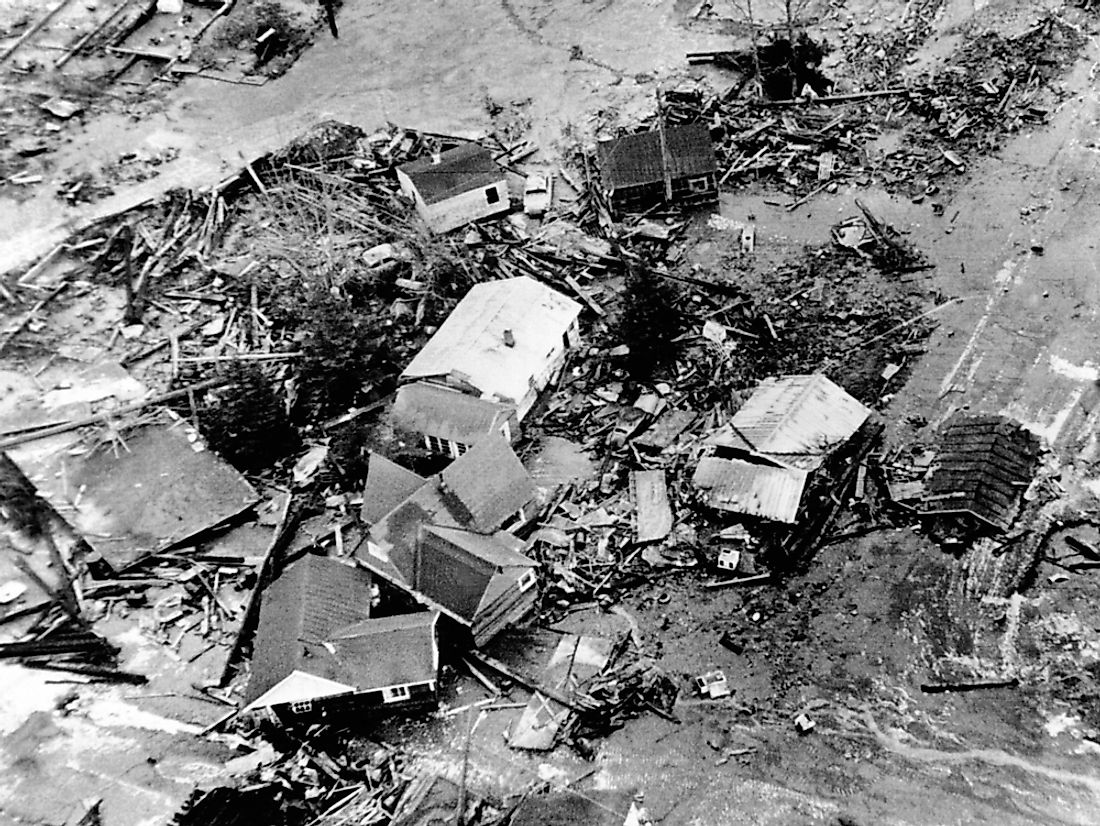What is Soil Liquefaction?

Soil liquefaction describes soil that loses strength when immense stress is applied. Saturated soils, where liquefaction takes place, are soils with the spaces between the soil particles being filled with water. The water exerts limited pressure which is magnified by an earthquake. Liquefaction also puts pressure on retaining walls causing the soil particles to slide or tilt. Such movements usually cause considerable damage to structures.
Examples Of Soil Liquefaction Incidents
Niigata Earthquake (Honshu, Japan, 1964)
On June 16, 1964, an earthquake of magnitude between 7.5 and 7.6, hit the city of Niigata, Japan. The earthquake had a focal depth of 21 miles, with the coastal areas experiencing severe soil liquefaction of VIII on the Mercalli intensity scale. Reverse movements of the ground and poor sub-soil conditions are some of the factors that reactivated the fault. Most of Niigata stands on unconsolidated sand from deltaic deposits from the Agano and Shinano rivers. 15 minutes after the earthquake, Niigata received its first wave of the Tsunami. It flooded the Awa Island, Sado Island, and Oki Islands in Shimane Prefecture. Ryotsu Harbor recorded a 9 foot high wave, Shiotami 13 feet, and Naoetsu 3-6 feet. Sandy beaches recorded up to 20 feet. The ensuing waves had a 20 and 50 minute time interval.
Alaska earthquake (South-central Alaska, US, 1964)
March 27, 1964 brought with it a 9.2-moment magnitude earthquake to the Prince William Sound areas of Alaska. The earthquake started around 15.5 miles underground, with the epicenter about 74 miles east of Anchorage, 6 miles east of the Fiord College, and 55 miles west of Valdez. The rapture lasted for about 4.5 minutes making it the most powerful soil liquefaction in US history. The movements were felt as far as 1200 miles in Seattle, Washington. Rivers, lakes, and many waterways sloshed as far as Texas and Louisiana. Only the water recorders of Delaware, Connecticut, and Rhode Island did not register the earthquake. Tsunamis from the earthquake caused considerable damage as far as California and Oregon. There were 129 fatalities and a property loss equivalent to $2.3 billion in 2013.
Loma Prieta earthquake (Northern California, US, 1989)
On October 17, 1989, an earthquake with an epicenter in Nisene Marks State Park hit Northern California for approximately 8-15 minutes. Loma Prieta earthquake had a 6.9-moment magnitude and IX maximum Mercalli intensity. 63 people died and 3,757 were injured. The region had undergone a four-year drought, thus limiting the potential of landslides. However, the terrain around the epicenter experienced much movement with up to 4,000 ground failures occurring in those 15 seconds. Extensive damages took place in Santa Cruz County as well as some considerable property destruction in Monterey County. However, effects extended to the San Francisco Bay Area as well as Oakland, where site amplification due to liquefaction occurred. A large number of ground effects such as downslope movement, ground cracks, and slumps occurred. Liquefaction caused severe damage in the Marina District of San Francisco, and a non-destructive tsunami hit Monterey Bay. The highest damage happened in the collapse of Cypress Street Viaduct Nimitz Freeway. The upper double-deck portion of the highway collapsed and crushed the cars on the lower levels while car crashed on the higher freeway. 49 feet of the bridge connecting San Francisco to Oakland Bay also collapsed.
Mitigating The Effects Of Soil Liquefactions
Soil liquefaction can cause extreme damage to the environment and buildings. Buildings with a sandy foundation experience an immediate loss of support resulting in drastic and irregular building arrangement and hence severe structural damage. The jerky ground movement may break underground utility lines. Thus, earthquake engineers have devised means of mitigating liquefactions in order to minimize these effects. Such methods include soil compaction methods like the Vibro compaction using depth vibrators, Vibro stone columns, and dynamic compaction. These techniques results in soil densification enabling structures to withstand soil liquefactions. Existing buildings could be injected with grout which stabilizes the soil layer susceptible to liquefaction.
What is Soil Liquefaction?
| Rank | Incident | Location | Year |
|---|---|---|---|
| 1 | Niigata earthquake | Honshu, Japan | 1964 |
| 2 | Alaska earthquake | South-central Alaska | 1964 |
| 3 | Loma Prieta earthquake | Northern California, United States | 1989 |
| 4 | Great Hanshin earthquake | Hyogo Prefecture, Japan | 1995 |
| 5 | Chuetsu earthquakes | Niigata Prefecture, Japan | 2004 |
| 6 | Canterbury earthquake | South Island, New Zealand | 2010 |
| 7 | Christchurch earthquake | Christchurch, New Zealand | 2011 |











